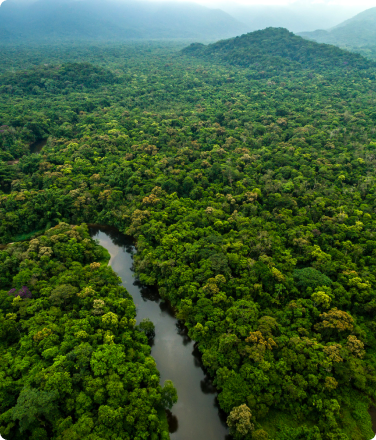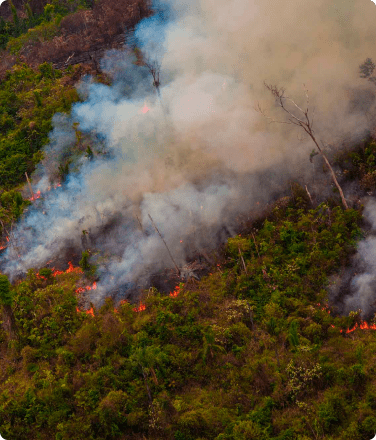We’re often asked what it’s like to journey deep into the Amazon to meet with our partners on the frontlines of rainforest protection. As part of our new series, Stories From the Ground, we’ll be sharing firsthand experiences from our field team. In our latest trip, members of the Rainforest Foundation US (RFUS) team, joined by a US-based environmental advocate from Palo Alto, traveled to the Upper Napo region, a remote area along Peru’s northeastern border with Ecuador. Through these accounts, we hope to give you a ground-level view of our work and the inspiring Indigenous communities leading the way in rainforest protection.
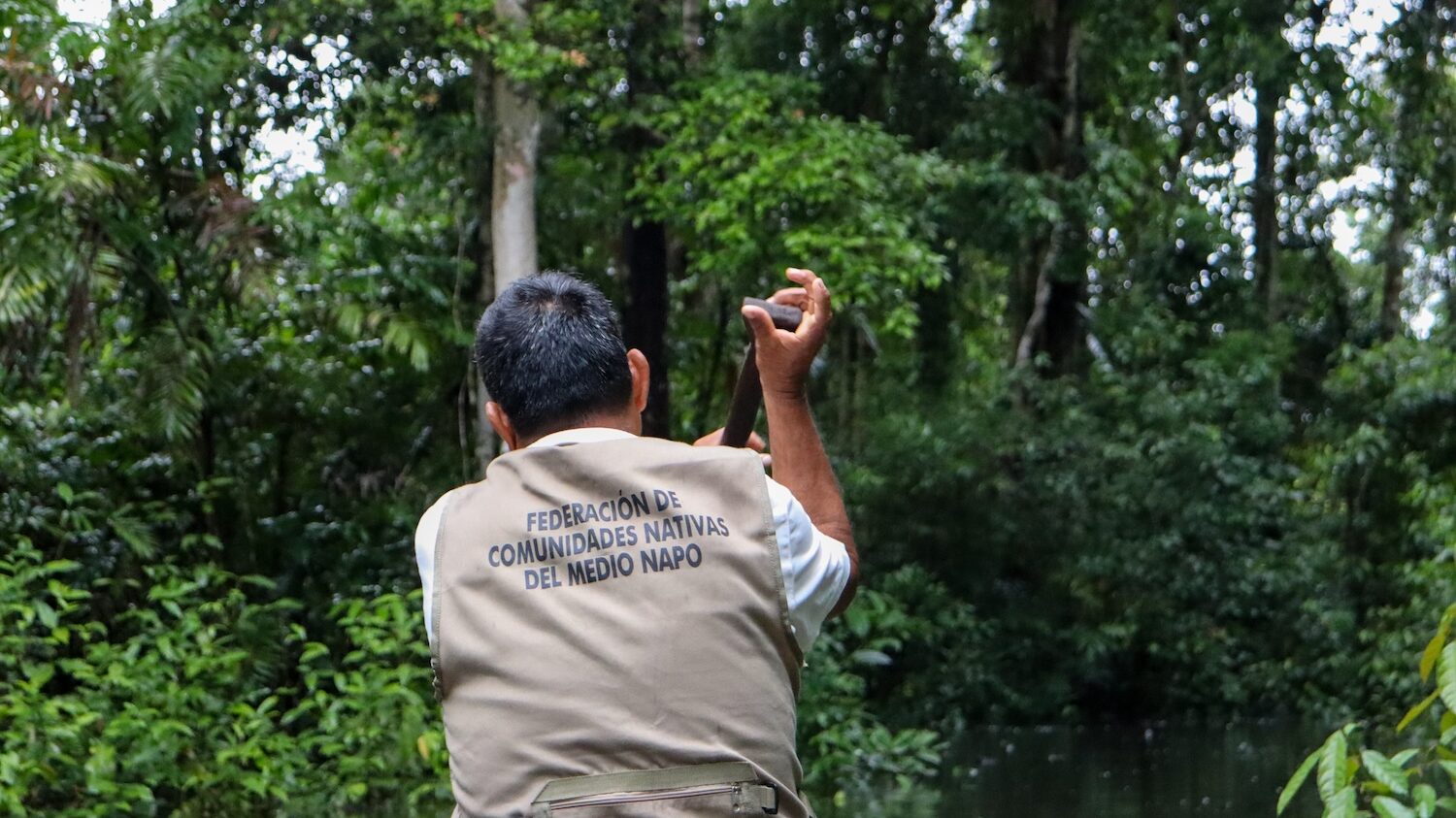
Nuevo Libertador – Upper Napo Basin, Loreto, Peru
By Gina Ruiz Caro, Director of Western Amazon Region, Rainforest Foundation US (RFUS), with support from Marita Domper, Communications Officer, Organization of the Indigenous Peoples of the Eastern Amazon (ORPIO)
On Tuesday, May 20th, a small group of us departed from Iquitos, Peru, and headed toward the community of Nuevo Libertador in the Upper Napo region. Iquitos is the largest city in the world inaccessible by roads—visitors can only arrive by boat or plane! We traveled by boat deep into the Amazon, navigating the river for nearly seven hours. It’s not an easy journey, but the excitement of witnessing firsthand how communities organize and protect their territories made it worthwhile.
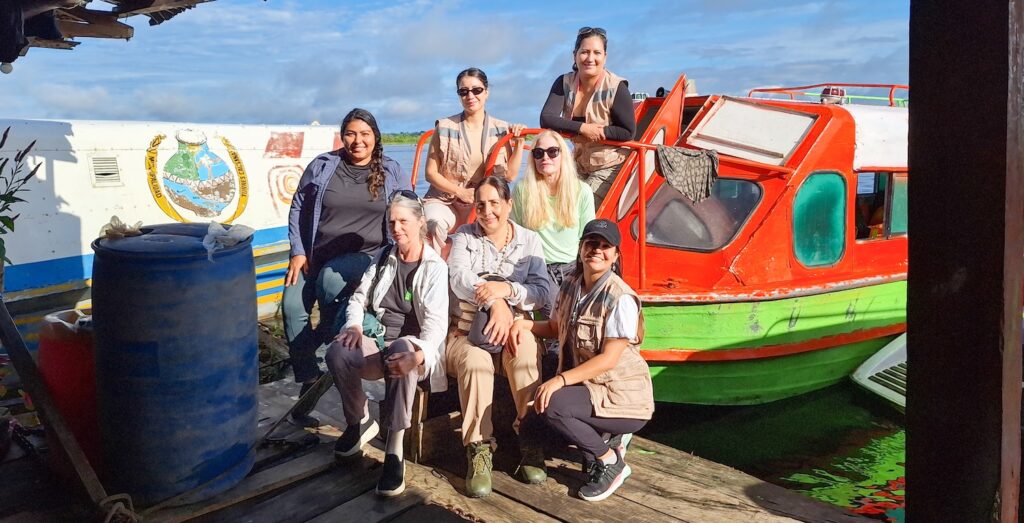
We were a group of seven women: Jennifer, an environmental advocate and supporter from Palo Alto, California, who came to learn more about our work in person. Melissa and Wendy, members of the RFUS team.
Three colleagues from ORPIO, including Carin, ORPIO’s administrator; Sabrina, an anthropologist; and Marita, the organization’s communications lead. All of these women are deeply committed to finding ways to amplify Indigenous voices from the Loreto region. And myself. I’m based here, in Peru where I manage the RFUS team. Though I’ve traveled to the field multiple times, it was very special being able to experience this journey with people who had never visited the Amazon before or who had never had the opportunity to see the amazing work of our Indigenous partners.
We landed on the shores of the community in the late afternoon and were greeted with a smile by RFUS technology leader, Plinio Pizango, accompanied by Apu Adme Aspajo, president of the Federation of Indigenous Communities of the Middle Napo, and the Apu of the Nuevo Libertador community, Tedy German Vega. Betty Rubio, an Indigenous Kichwa forest patroller and one of the region’s lead trainers for RFUS, was also part of the welcoming crew. Betty is one of 26 women among a total of 91 forest patrollers who are part of the RFUS Rainforest Alert program—a community-based initiative that equips Indigenous forest patrollers with tools like drones and smartphones to protect vast swaths of rainforest. Deforestation was reduced by 52% in the first year alone in the territories that were part of Rainforest Alert (if you can’t tell, we’re very proud of this program!).
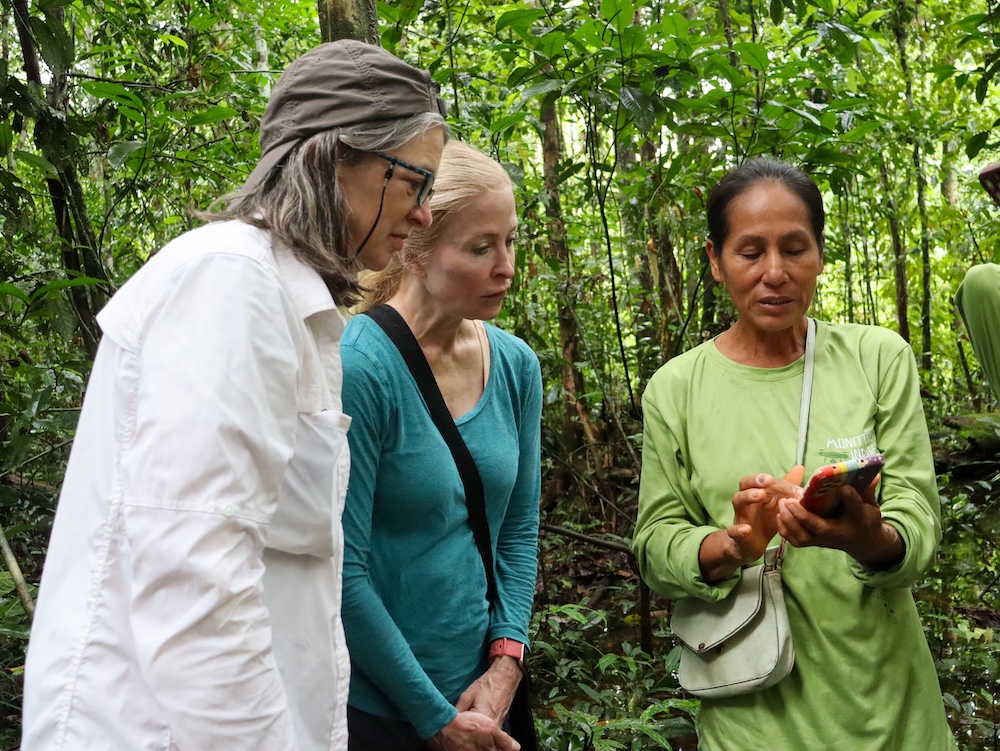

In addition to sharing stories with our team about their monitoring work, Betty also accompanied us to meet families from the Maijuna people, who have been practicing meliponiculture—the art of raising stingless native bees—for over eight years. This project, a knowledge exchange on meliponiculture management between the Kichwa communities of Napo and the Maijuna people of Nueva Vida, was supported by One Planet and is now expanding to additional Kichwa communities in the Upper Napo.
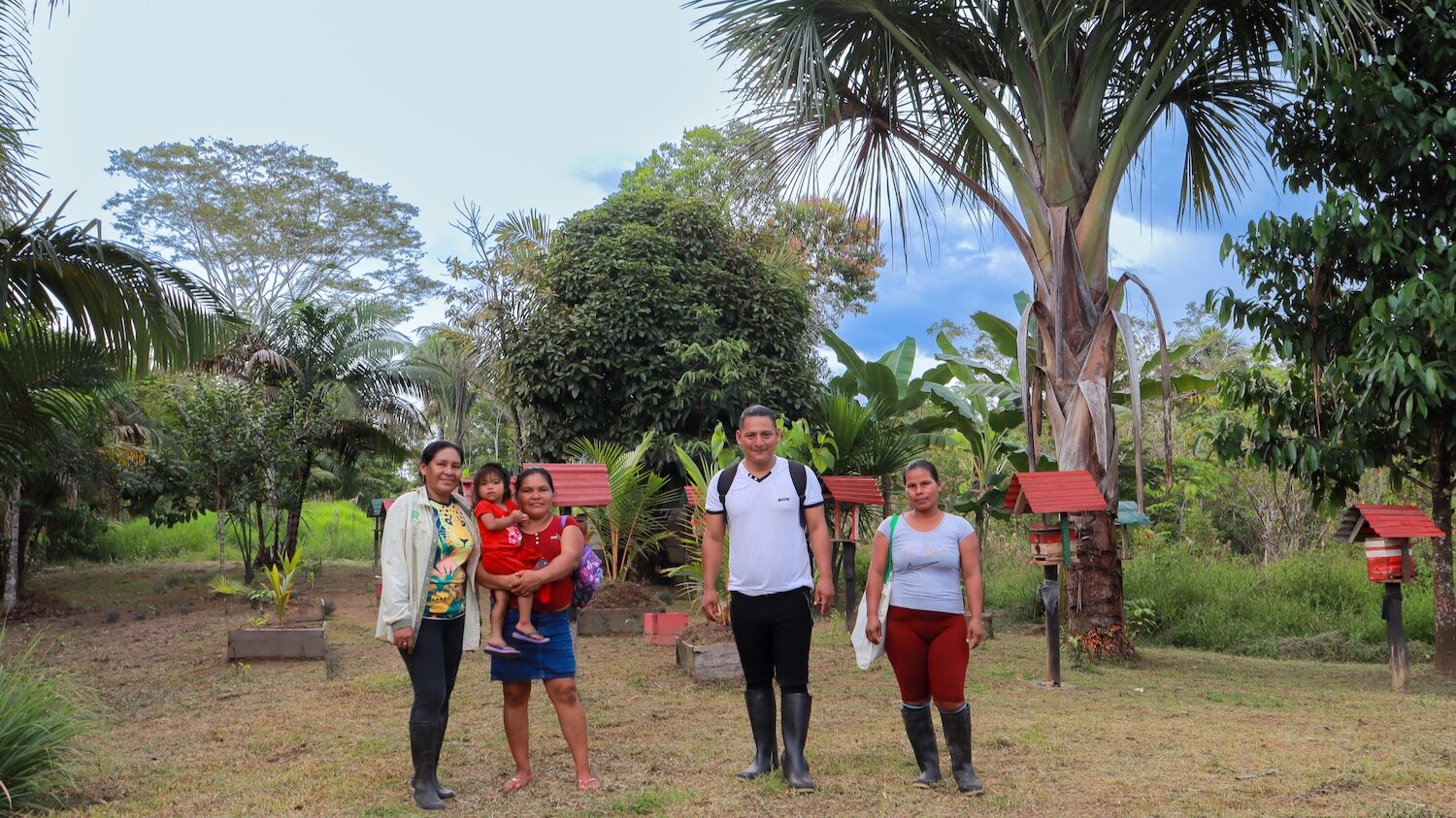
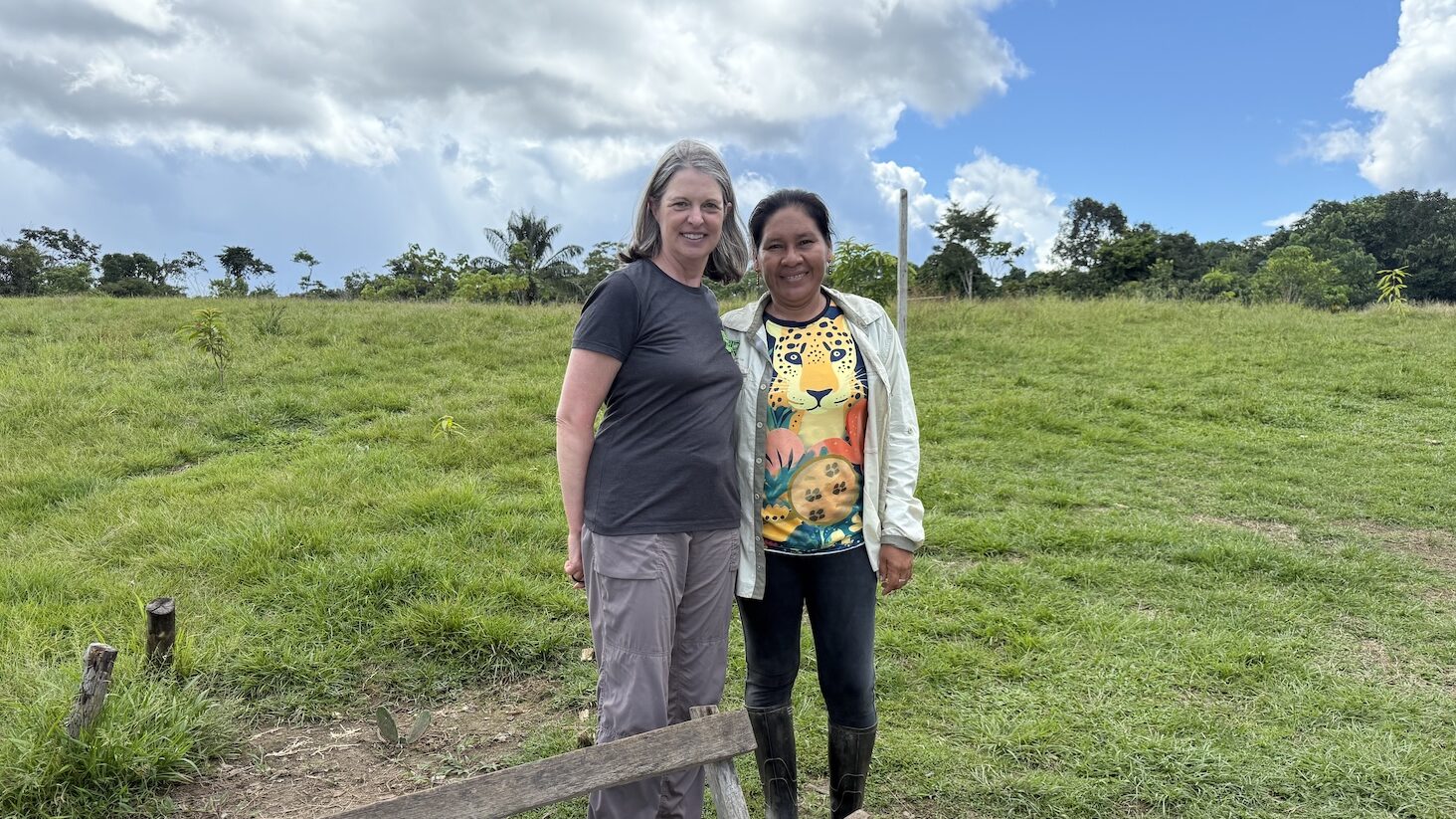
It was fascinating to learn how families within these communities are growing this initiative and sharing their knowledge with others, highlighting the cultural exchanges between the Maijuna and Kichwa peoples. Together, through beekeeping, they are building sustainable economic alternatives by selling honey and other bee-based products at local markets. Through these activities these communities protect the forest and biodiversity with support from RFUS and the International Union for Conservation of Nature (IUCN).
The meliponiculture project is also a great example of the intergenerational transfer of traditional knowledge. The hives are largely managed by youth whose work is overseen by Elders in the community who pass on the ancestral knowledge of this practice. One of the youth we met was Uriel, who used to work on the coast in agribusiness. After his family told him about the meliponiculture project, Uriel decided to return to join this community initiative. Although the road hasn’t been easy, he now has 15 bee colonies and is continuing to grow the project with support from his Maijuna peers.
Technology to Defend the Territory
Before the trip, Jennifer had asked if she could bring a gift for the community. Our initial response was simple: “Don’t worry.” But upon reflection, a real need came to light: the ability to be connected. Thanks to her support, we were able to bring a Starlink device to the community, which will now allow the patrollers to report threats to the forest in real time and strengthen their territorial monitoring efforts as well as provide access to emergency medical support.
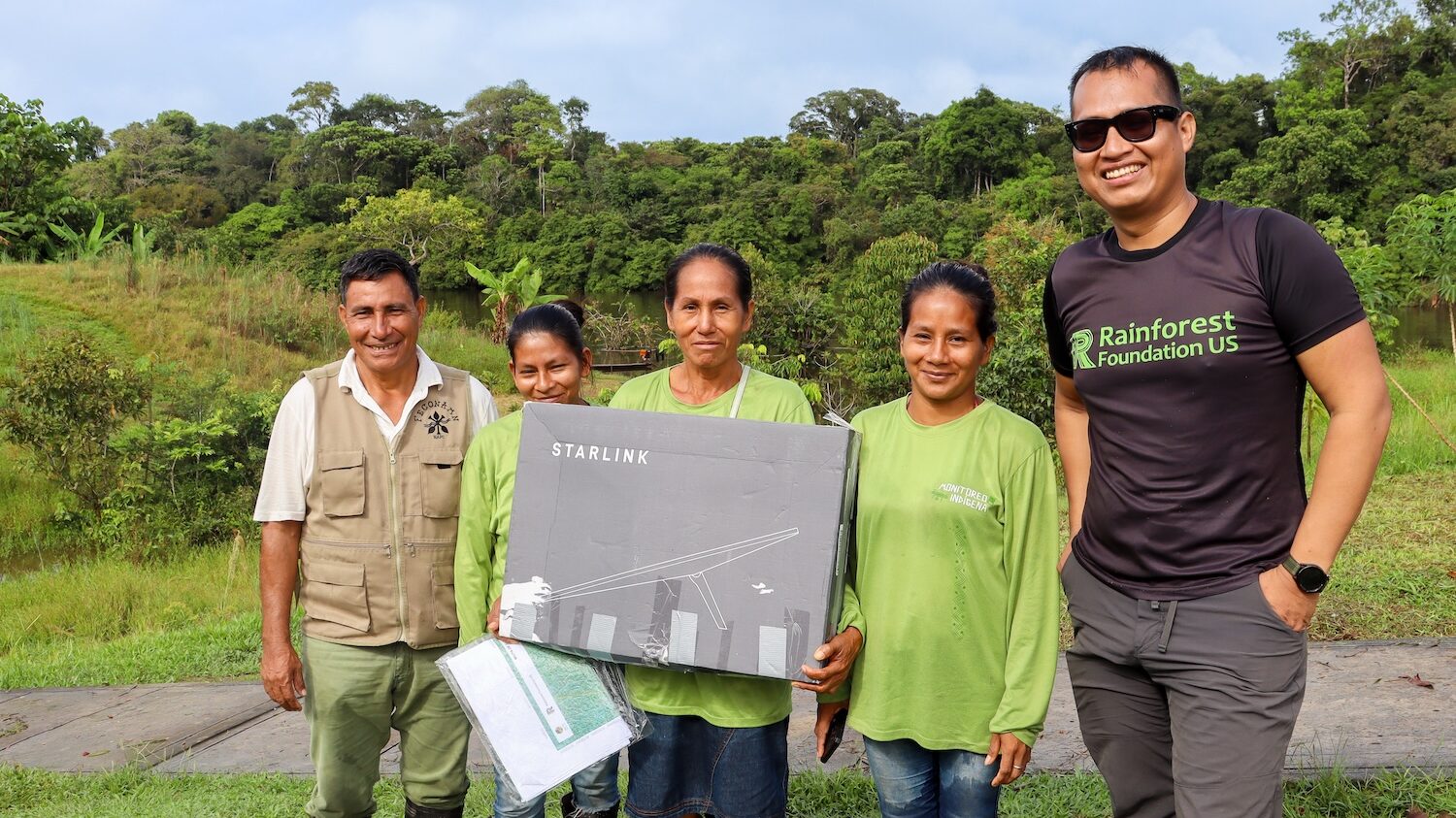
Seeing a drone fly over this vast—and threatened—forest is powerful. But even more inspiring is watching the Indigenous patrollers lead this work with determination and dedication, protecting what is theirs: the forest, the territory, life itself. This experience reaffirms that when technology is combined with ancestral wisdom, community-driven work, and sustainable livelihoods, a powerful force emerges—one capable of transforming and safeguarding Indigenous territories.
As Jennifer said of the experience, “Life in Nuevo Libertador was full of energy and tradition—kids running around in the warm evening air, hens tucking their chicks under their wings, families working on canoes, and everyone pitching in to gather or prepare food. It felt like the whole village turned out to watch as Betty showed Melissa and me how to fly the drone—thankfully we didn’t crash it! I was really impressed by how the community is blending useful tech with their way of life, all while protecting the rainforest and staying true to their traditions.”
Learn more about Indigenous-led rainforest protection, and keep up with the latest developments in our work by signing up for our email list today.


